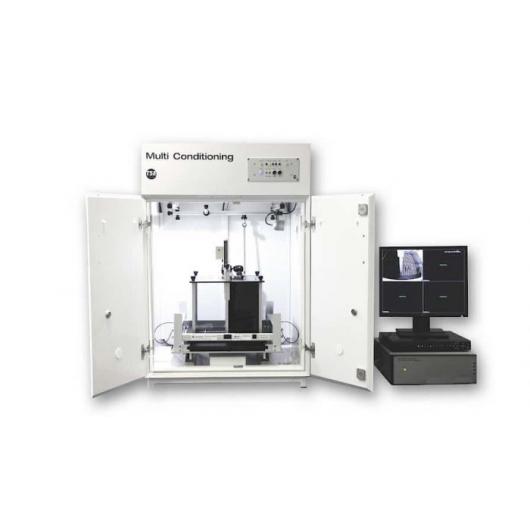




Multi Conditioning System
Features
- Ten paradigms in one system
- Up to 4 units operated by a single PC
- Strictly controlled environment – increased reproducibility
- Variety of test arenas & accessories - maximum flexibility
- High resolution 3D movement detection
- Parallel camera observation
- User-friendly software including basic GLP features
- Customizable experimental design
- Extensive graphical and numerical analyses
Research areas
- Basic Neuroscience
- Behavioral Phenotyping
- Neuropsychiatric Diseases
- Drug Development
Modules
- Active Avoidance
- Place Preference
- Fear Conditioning
- Hole Board Exploration
- Latent Inhibition
- Learned Helplessness
- Light-Dark Test
- Open Field/Activity
- Panic Response
- Passive Avoidance
The TSE Multi Conditioning System is a multi-purpose modular platform that integrates ten different behavioral paradigms for the evaluation of learning, memory, emotion, stress-related and locomotory behavior in mice and rats – all in one system! The exceptional variability and flexibility is a key feature of the Multi Conditioning System making the system unique on the market!
The universal measuring unit is an enclosed environment that offers full software-control of environmental conditions. By excluding the influence of external factors (sound, scent, light, temperature – even the presence of the observer) accuracy and intra- & inter-lab reproducibility of experimental data is maximized.
The measuring unit is completed with a large variety of arenas and accessories. One- or Two-compartment arenas with or without floor and special arenas for combination with optogenetics or fiber photometry are available. Depending on the paradigm foot shock with an extraordinarily small step width of 0.025mA can be applied as an unconditioned stimulus. Software-controlled sine sound, noise and light can be used as conditioned stimuli with adjustable intensity and/or frequency – even when the experiment is running! Animal position and movement is recorded using a high-resolution 3D infrared light-beam frame with rearing detection in up to 2 levels.
Video recording in parallel allows additional observation even in total darkness. Use the integrated TTL signals to couple the system to 3rd party instruments for combination with optogenetics, electrophysiology or fiber photometry. Three software packages can be freely combined according to your experimental requirements. The immense variety of experimental parameters allows for unique flexibility in experimental protocols.
The system is in continuous development in close cooperation with our users and new features are added frequently. Please contact us to discuss your specific needs!
Ineichen C, Greter A, Baer M, Sigrist H, Sautter E, Sych Y, Helmchen F, Pryce CR. Basomedial amygdala activity in mice reflects specific and general aversion uncontrollability. Eur J Neurosci (2020); Dec 18. Online ahead of print
Khalaf O, Gräff J. Reactivation of recall-induced neurons in the infralimbic cortex and the basolateral amygdala after remote fear memory attenuation. Front Mol Neurosci 2019; 12: 70
Richetto J, Polesel M, Weber-Stadlbauer U. Effects of light and dark phase testing on the investigation of behavioural paradigms in mice: relevance for behavioural neuroscience. Pharmacol Biochem Behav 2019; 178: 19-29.
Wang G, Xie H, Wang L, Luo W, Wang Y, Jiang J, Xiao C, Xing F, Guan JS. Switching from fear to no fear by different neural ensembles in mouse retrosplenial cortex. Cereb Cortex 2019; 29(12): 5085-97.
Paul AK, Gueven N, Dietis N. Age-dependent antinociception and behavioral inhibition by morphine. Pharmacol Biochem Behav 2018;168: 8-16.





